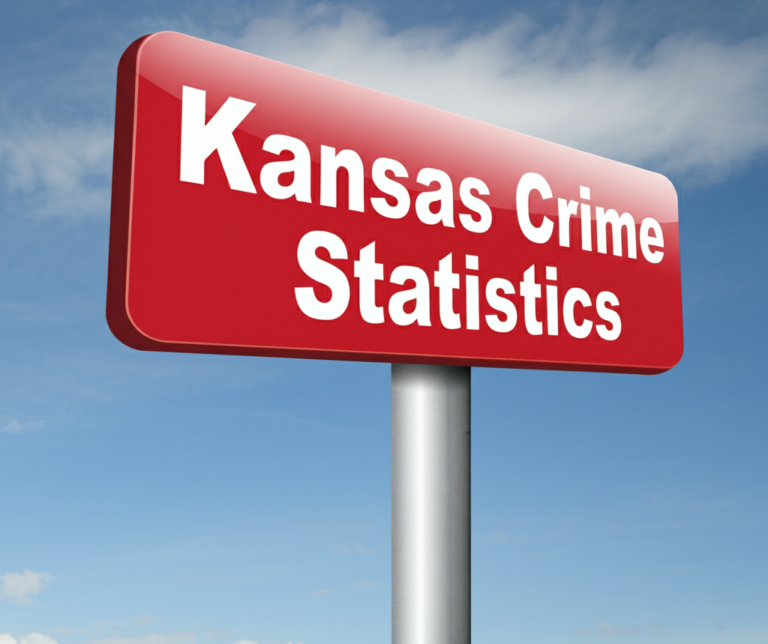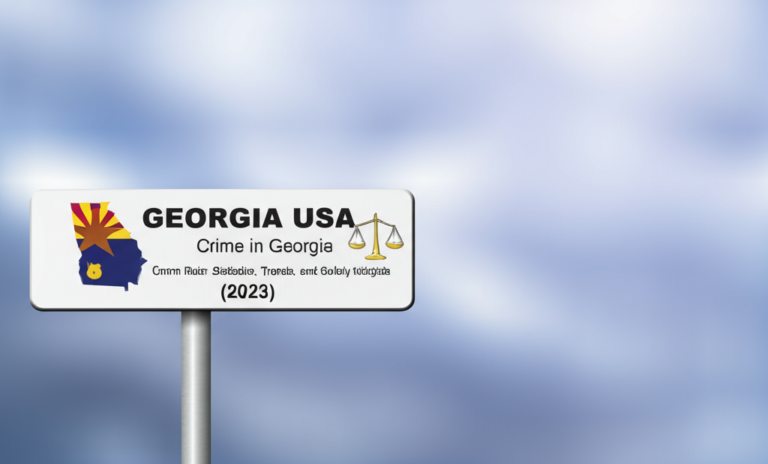Missouri Crime Rate: In-Depth Analysis and Statewide Crime Statistics
Missouri experiences challenges related to crime that affect its communities and law enforcement efforts. The state displays a crime rate above the national median, highlighting areas where public safety requires focused attention. Within Missouri, the interplay of crime statistics reveals a deeper story tied to social issues, justice, and the effectiveness of legal actions. These statistics serve as important tools for understanding how criminal justice systems work here. They also shed light on how various social concerns influence the current crime trends. By exploring these factors, it becomes possible to evaluate Missouri’s efforts in maintaining security and addressing crime effectively.

Comprehensive Breakdown of Crime Types in Missouri
Crime in Missouri primarily falls into two broad categories: violent crime and property crime. Violent crime includes offenses where force or threat is present, such as murder, robbery, assault, and other serious acts against persons. Property crime, on the other hand, involves crimes against belongings like theft, burglary, and motor vehicle theft. Missouri’s crime statistics record a total of 158,243 reported cases, with violent crime making up over 28,000 and property crimes exceeding 129,000 cases.
The legal aspects surrounding these crimes impact how cases are processed and how justice is served. Understanding the specific numbers for each crime type helps in crafting more targeted policies and law enforcement strategies to reduce them effectively.
| Crime Category | Total Cases Reported | Rate per 1,000 Residents |
|---|---|---|
| Total Crimes Reported | 158,243 | 25.54 |
| Violent Crime | 28,419 | 4.59 |
| Property Crime | 129,824 | 20.95 |
Detailed Violent Crime Statistics in Missouri

Violent crime remains a critical concern across Missouri. Approximately 28,419 violent crime incidents have been recorded, reflecting the severity and frequency of offenses that impact the state’s public safety. Among these, assault is the most prevalent category, accounting for a significant majority of violent cases. Other violent crimes such as murder, rape, and robbery also contribute notably to the overall figures.
The risk of falling victim to violent crime in Missouri stands at about 1 in 218 residents. This highlights the ongoing need for vigilance in criminal law enforcement and community prevention efforts. Violence, including sexual violence and homicide, calls for comprehensive strategies that address problem behaviors at their roots.
- Violent crimes recorded in Missouri total over 28,000 incidents.
- Assault is the most common violent crime category in the state.
- Missouri’s risk of violent crime victimization is about 1 in 218 residents.
| Violent Crime Type | Reported Cases | Rate per 1,000 Residents |
|---|---|---|
| Murder | 564 | 0.09 |
| Rape | 2,877 | 0.46 |
| Robbery | 3,280 | 0.53 |
| Assault | 21,698 | 3.50 |
Missouri Violent Crime Compared to National Median
When comparing Missouri’s violent crime rates to national medians, several differences emerge. Overall, Missouri’s violent crime rate is higher than the U.S. median, emphasizing some elevated risks for residents. For instance, the rates of murder and rape in Missouri also exceed national medians, while robbery is somewhat lower than the typical United States rate. Assault stands out as a major contributor to Missouri’s increased violent crime rate compared to national figures.
This information aids in understanding Missouri’s position relative to national public safety benchmarks. It supports analyses centered on crime comparison and highlights areas needing enhanced law enforcement focus. Those interested in exploring these nationwide crime statistics further can visit the FBI’s Uniform Crime Reporting (UCR) program at https://www.fbi.gov/services/cjis/ucr for detailed data.
| Crime Type | Missouri Rate | National Median Rate |
|---|---|---|
| Violent Crime | 4.59 | 4.00 |
| Murder | 0.09 | 0.06 |
| Rape | 0.46 | 0.38 |
| Robbery | 0.53 | 0.67 |
| Assault | 3.50 | 2.64 |
Insights into Property Crime in Missouri

Property crime accounts for the majority of criminal activity in Missouri, with over 129,824 incidents reported. Theft dominates this category, making it the most commonly reported property crime. Burglary and motor vehicle theft also contribute significantly to the overall numbers.
The odds of becoming a victim of property crime in Missouri are roughly 1 in 48 residents. These figures suggest a pressing need for public safety measures that focus heavily on protecting personal property. Security awareness and robust criminal law enforcement remain vital to addressing these offenses effectively.
- Property crimes dominate the state’s criminal activity with a total exceeding 129,000 cases.
- Theft accounts for the majority of property crimes reported.
- Chances of falling victim to property crime in Missouri stand at approximately 1 in 48 residents.
| Property Crime Type | Reported Cases | Rate per 1,000 Residents |
|---|---|---|
| Burglary | 15,563 | 2.51 |
| Theft | 84,604 | 13.65 |
| Motor Vehicle Theft | 29,657 | 4.79 |
Property Crime Rates in Missouri Versus National Median
Missouri’s property crime rates are very close to national median levels in areas such as burglary and theft. Burglary rates align precisely with the U.S. median, while theft rates are slightly higher in Missouri. However, motor vehicle theft stands out as more frequent in Missouri compared to the national median. These comparisons highlight specific points of risk where local communities might focus prevention efforts.
Tracking these numbers alongside national data provides meaningful context for policymakers and law enforcement as they devise strategies to safeguard residents. For additional statistical insights, the Bureau of Justice Statistics website at https://www.bjs.gov/index.cfm?ty=pbdetail&iid=7046 offers comprehensive information.
| Property Crime Type | Missouri Rate | National Median Rate |
|---|---|---|
| Burglary | 2.51 | 2.51 |
| Theft | 13.65 | 13.47 |
| Motor Vehicle Theft | 4.79 | 3.19 |
Crime Density Analysis: Missouri Compared to National Levels

Looking at the density of crime helps explain how Missouri measures up against the national levels geographically. The state reports about 27 crimes per square mile, which is just slightly higher than the national median of 26.5. This slight elevation can be attributed to areas with urbanization, population concentrations, and particular local crime trends.
Understanding these patterns aids law enforcement agencies in better allocating resources and improving public safety strategies. Awareness about crime density is an important facet of criminology, especially in addressing challenges related to urban growth.
- Missouri reports 27 crimes per square mile, slightly above the national median of 26.5.
- This higher density reflects factors like urbanization, population concentrations, and regional crime patterns.
- Understanding crime density assists law enforcement in resource allocation and public safety strategies.
| Location | Crimes per Square Mile |
|---|---|
| Missouri | 27 |
| National Median | 26.5 |
Safest Cities in Missouri
Certain cities in Missouri have earned reputations as some of the safest in the state through consistently low crime rates. Asbury tops this list, setting a strong example in public safety. Other cities like Bolckow, Caledonia, and Climax Springs also feature highly in rankings based on crime statistics.
A safe environment not only reduces crime but also strengthens community trust and overall well-being. Social institutions and crime prevention programs play crucial roles in fostering safety across these cities, helping residents feel secure in their neighborhoods.
- Asbury leads as the safest city in Missouri based on crime statistics.
- Other top safe cities include Bolckow, Caledonia, and Climax Springs.
- Low crime environments contribute to social trust and community well-being.

| Rank | City |
|---|---|
| 1 | Asbury |
| 2 | Bolckow |
| 3 | Caledonia |
| 4 | Climax Springs |
| 5 | Eminence |
| 6 | Cole Camp |
| 7 | Hawk Point |
| 8 | Jerico Springs |
| 9 | Leslie |
| 10 | Brandsville |
Popular Cities in Missouri and Crime Overview
Missouri hosts a number of popular and populous cities, each with unique crime and public safety challenges. Cities such as Kansas City, St. Louis, and Springfield stand out as major urban centers in the state’s social and demographic fabric. While this section does not provide detailed crime data for these areas, it offers context for those interested in exploring the diversity of Missouri’s urban populations and their safety concerns.
Future research and social studies may extend into these locations to better understand the relationship between population density, crime, and public safety measures at play in metropolitan environments.
- Missouri features a diverse range of populous cities with varied crime profiles.
- Cities such as Kansas City, St. Louis, and Springfield are significant population centers with unique public safety challenges.
- This section lists popular urban areas in Missouri without detailed crime data but serves as context for further research.
| City | Crime Data Availability |
|---|---|
| Blue Springs | [city_crime_row city=”Blue Springs” state=”Missouri”] |
| Chesterfield | [city_crime_row city=”Chesterfield” state=”Missouri”] |
| Columbia | [city_crime_row city=”Columbia” state=”Missouri”] |
| Florissant | [city_crime_row city=”Florissant” state=”Missouri”] |
| Independence | [city_crime_row city=”Independence” state=”Missouri”] |
| Joplin | [city_crime_row city=”Joplin” state=”Missouri”] |
| Kansas City | [city_crime_row city=”Kansas City” state=”Missouri”] |
| Lee’s Summit | [city_crime_row city=”Lee’s Summit” state=”Missouri”] |
| O’Fallon | [city_crime_row city=”O’Fallon” state=”Missouri”] |
| Springfield | [city_crime_row city=”Springfield” state=”Missouri”] |
| St. Charles | [city_crime_row city=”St. Charles” state=”Missouri”] |
| St. Joseph | [city_crime_row city=”St. Joseph” state=”Missouri”] |
| St. Louis | [city_crime_row city=”St. Louis” state=”Missouri”] |
| St. Peters | [city_crime_row city=”St. Peters” state=”Missouri”] |
| Wentzville | [city_crime_row city=”Wentzville” state=”Missouri”] |
Data Collection and Analysis Methodology for Missouri Crime Rate

The crime data for Missouri is gathered through a broad network encompassing nearly 18,000 local law enforcement agencies throughout the United States. This extensive collaboration ensures that reported crime figures represent a comprehensive view of the state’s criminal activity. The data is updated annually to keep information current and relevant for policymakers and researchers.
To enhance accuracy, a detailed meta-analysis is employed. This process incorporates millions of reported crimes and associates them with geospatial points to correct underreporting and address errors. Such rigorous methodology supports reliable crime statistics that help improve understanding and promote informed strategies within criminal justice and public safety sectors.
- Missouri crime data is compiled from approximately 18,000 local law enforcement agencies nationwide.
- The reporting process involves annual data updates to maintain accuracy and relevance.
- Comprehensive meta-analysis incorporates millions of reported crimes along with geospatial data points to address underreporting and errors.
Conclusion
In conclusion, the analysis of Missouri’s crime statistics reveals a complex landscape of violent crime and property crime, with significant implications for public safety and law enforcement. The state’s rates of violent crime, including murder, rape, and robbery, exceed national medians, underscoring the need for targeted interventions. Property crimes, particularly theft, dominate the criminal activity, affecting a broad segment of the population.
The role of law enforcement, criminal justice, and social institutions is critical in addressing these challenges. Efforts to enhance public safety must consider the underlying social issues, such as aggression and misconduct, that contribute to crime. Missouri’s crime data, collected through a rigorous methodology, provides a foundation for developing effective strategies to reduce crime and improve community well-being. The state’s commitment to addressing these issues is essential for fostering a safer environment for all residents.




